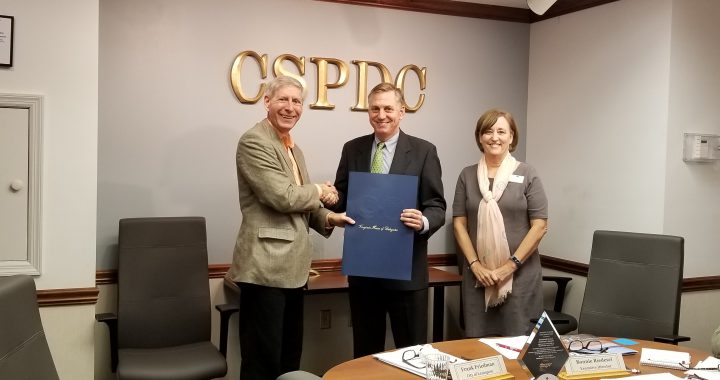News
New BRITE Bus Transit Manager
Aidan Quirke has been hired as CSPDC’s Transit Program Manager to replace Nancy Gourley, who will retire at the end of the year. A native of Virginia, Aidan holds a Master’s degree in Urban and Regional Planning from Virginia Commonwealth University and has worked for public transit agencies in Richmond, Virginia and Savannah, Georgia
Inter-Regional Transit Study Kicks Off
The Virginia Department of Rail and Public Transportation (DRPT) has contracted with Kimley-Horn to complete additional research and analysis on the feasibility of Afton Express, a proposed public transit service connecting the Staunton, Augusta County, Waynesboro (SAW) region to the City of Charlottesville. This approximately six-month study will build on previously completed efforts to evaluate the feasibility of this service, while examining specific elements of those studies in greater detail.
Buena Vista Receives CDBG Planning Grants
Delegate Landes Presents 50th Anniversary Resolution
This year, the General Assembly passed a resolution in honor of the Commonwealth’s 21 PDCs. During the CSPDC’s annual meeting on August 19, Delegate Steve Landes presented the resolution to the Commission.
BRITE Bus to Give Free Rides During Try Transit Week
Announcements
Please stay tuned for events and more information from the CSPDC.
Archives
- February 2025
- January 2025
- December 2024
- October 2024
- September 2024
- August 2024
- July 2024
- June 2024
- May 2024
- April 2024
- March 2024
- February 2024
- January 2024
- November 2023
- October 2023
- September 2023
- August 2023
- July 2023
- June 2023
- May 2023
- April 2023
- March 2023
- February 2023
- January 2023
- December 2022
- October 2022
- September 2022
- August 2022
- July 2022
- June 2022
- May 2022
- April 2022
- March 2022
- February 2022
- January 2022
- December 2021
- November 2021
- October 2021
- August 2021
- July 2021
- June 2021
- May 2021
- April 2021
- March 2021
- February 2021
- January 2021
- December 2020
- November 2020
- October 2020
- September 2020
- July 2020
- June 2020
- May 2020
- April 2020
- March 2020
- February 2020
- January 2020
- November 2019
- October 2019
- September 2019
- June 2019
- May 2019
- April 2019
- March 2019
- February 2019
- January 2019
- December 2018
- October 2018
- September 2018
- August 2018
- July 2018
- June 2018
- May 2018
- April 2018
- March 2018
- February 2018
- January 2018
- December 2017
- November 2017
- October 2017
- September 2017
- August 2017
- July 2017
- June 2017
- May 2017
- April 2017
- March 2017
- February 2017
- January 2017
- December 2016
- September 2016




